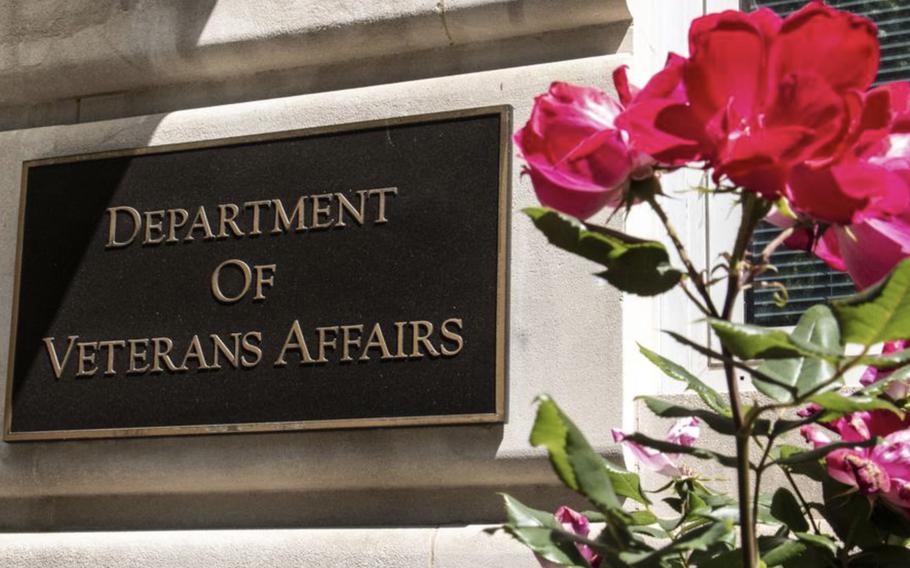
Veterans advocacy groups on Wednesday, June 12, 2024, urged House lawmakers to update eligibility rules and payment rates for a little-known program that gives a tax-free monthly benefit to veterans who are unable to work but lack a 100% disability rating from the Department of Veterans Affairs. (Stars and Stripes)
WASHINGTON — Veterans advocacy groups on Wednesday urged House lawmakers to update eligibility rules and payment rates for a little-known program that gives a tax-free monthly benefit to veterans who are unable to work but lack a 100% disability rating from the Department of Veterans Affairs.
“Veterans return [from combat] changed. They need the resources to thrive and survive. Ensuring their survivability is the least we can do,” Michael Figlioli, director of the National Veterans Service at the Veterans of Foreign Wars, said at a hearing of the House Veterans’ Affairs Committee’s subpanel on disability assistance and memorial affairs.
Figlioli and other veterans advocates said the “individual unemployability” program that provides much-needed financial help for veterans who otherwise would not qualify for full VA disability benefits is in need of a major review and update from Congress to address compensation levels as well as eligibility criteria that have not changed since being established in the 1940s.
Veterans become eligible for full VA disability compensation — at 100% — under the program after providing evidence of a work history of five years or more that shows problems obtaining and keeping employment. They must show illnesses and injuries connected to their military service contributed to their being unable to work, according to the VA.
In fiscal 2024, the program pays qualifying veterans a tax-free benefit of $3,800 per month.
More than 377,000 veterans received compensation through the program in 2023, receiving $7 billion overall in monthly payments and other benefits, the VA said.
Ron Burke, VA deputy undersecretary for policy and oversight, said the individual unemployability program provides full disability compensation for veterans who are unable to work but also have ratings for impairments that do not reach 100%.
Veterans only have to show a minimum disability of 60% for a single disability or 70% for two or more disabilities to be considered for the program.
Rep. Morgan Luttrell, R-Texas, who is chairman of the subcommittee, said the compensation is meant to “make veterans whole” by recognizing and awarding payments for projected income loss because of military service-related injuries and illnesses. But he also said the program pays everyone the same and does not vary amounts based on education and work history, which are indicative of earnings potential.
“We want to make sure the program is adequately supporting veterans who have earned it, and their families,” he said.
Congress needs to begin looking at increasing compensation that goes beyond the annual cost of living adjustment, said Rep. Chris Pappas, D-N.H.
“I appreciate having a hearing to highlight this obscure program and shed light on ways that VA may help veterans who are unable to work or willing to reenter the workforce but need some assistance,” he said. “But I would argue that the payment rate is not high enough.”
Pappas also said the disability rating schedule is rigid when impairment varies by individual.
“Two veterans may experience the same disability differently,” he said.
Marquis Barefield, assistant national legislative director with the Disabled American Veterans, said compensation for veterans in the program is about 25% less than the average salary of $59,000 for U.S. workers.
“It is time to change that,” he said.
Michael Stoddard, national service director of the Wounded Warrior Project, said a survey of the group’s members showed most felt the $3,800 monthly compensation was not enough to meet financial obligations.
Veterans groups also told lawmakers that they opposed making evaluations of a veteran’s job skills, called vocational assessments, a requirement to qualify for the compensation.
“Most veterans want to work,” Barefield said.
He said the requirement would place an undue burden on veterans who might have the skills to perform a job but have mental disorders or physical impairments from military service that keep them from employment.
The veterans groups also said they opposed attempts by some lawmakers to reduce or eliminate the program for veterans at the federal retirement age of 67 who are collecting Social Security.
The organizations said veterans receiving individual unemployability compensation have service-connected disabilities that have prevented them from working and contributing fully to the Social Security program, thus limiting compensation in retirement.